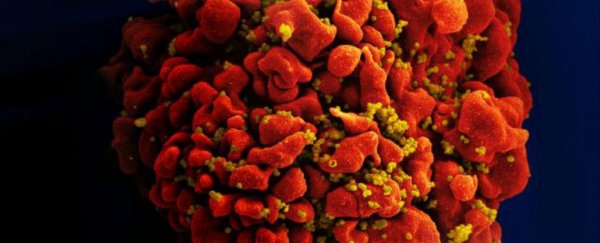For the first time, researchers have used gene-editing to eliminate HIV DNA from the genomes of three different animal models to ensure that replication of the virus was completely shut down.
The technique has been demonstrated in animals with both acute and latent HIV, and was successful in human immune cells transplanted into mice. The team calls it a "significant step" towards human clinical trials.
A team led by researchers from Temple University and the University of Pittsburgh used the revolutionary gene-editing technology, CRISPR/Cas9, to eliminate HIV-1 DNA from the T cell genomes of mice with various stages of the disease.
The technique works by guiding 'scissor-like' proteins to targeted sections of DNA within a cell, and prompting them to alter or 'edit' these sections in some way.
CRISPR refers to a specific repeating sequence of DNA extracted from a prokaryote - a single-celled organism such as bacteria - which pairs up with an RNA-guided enzyme called Cas9.
This 'guide RNA' latches onto the Cas9 enzyme, and together they'll search for the virus that matches the code they've been programmed to find. Once they locate it, the Cas9 gets to cutting and destroying it.
In early 2016, the team first demonstrated how CRISPR/Cas9 could 'cut out' the HIV-1 virus from rats and mice with HIV-1 DNA inserted into the genome of every tissue of their body.
This time around, they were able to show that the technique worked on various forms of the disease: an acute infection of EcoHIV, the mouse equivalent of human HIV-1; and an inactivated form of HIV-1.
"Our new study is more comprehensive. We confirmed the data from our previous work, and have improved the efficiency of our gene-editing strategy," says Wenhui Hu from Temple University.
"We also show that the strategy is effective in two additional mouse models, one representing acute infection in mouse cells and the other representing chronic, or latent, infection in human cells."
In a third animal model, the researchers transplanted human immune cells into mice before infecting them with a latent HIV-1 virus.
The fact that the technique appears to work on both the active and dormant forms of the disease is important, because even if the virus isn't actively replicating in the body's immune cells, that doesn't mean it won't suddenly kick into gear at any given moment.
As opposed to the acute form of the disease, where HIV actively replicates, the latent form is much harder to keep track of in the cells, because once the virus is inactivated by medication, it can hide out in secret reservoirs in the immune system for months, or even years, waiting for the right conditions to reemerge.
That's why patients have to remain on medication for their entire lives - latent HIV can activate within weeks if treatment stops.
After applying the CRISPR/Cas9 technique to acute and latent models of the virus, the team used a newly developed imaging system to confirm that they had successfully shut down replication in both.
"The imaging system … pinpoints the spatial and temporal location of HIV-1-infected cells in the body, allowing us to observe HIV-1 replication in real-time and to essentially see HIV-1 reservoirs in latently infected cells and tissues," says one of the team, Kamel Khalili from the Temple University.
The team now aims to progress to primate models of the disease, and hopefully to human clinical trials.
"The next stage would be to repeat the study in primates, a more suitable animal model where HIV infection induces disease, in order to further demonstrate elimination of HIV-1 DNA in latently infected T cells and other sanctuary sites for HIV-1, including brain cells," says Khalili.
"Our eventual goal is a clinical trial in human patients."
They'll be faced with at least one big challenge along the way - research published last year found that HIV could outmanoeuvre certain CRISPR/Cas9 techniques - so lots more verification and replication is needed before we know if the strategy can hold up long-term.
But this is definitely a study to keep an eye on in the coming months.
The research has been published in Molecular Therapy.
